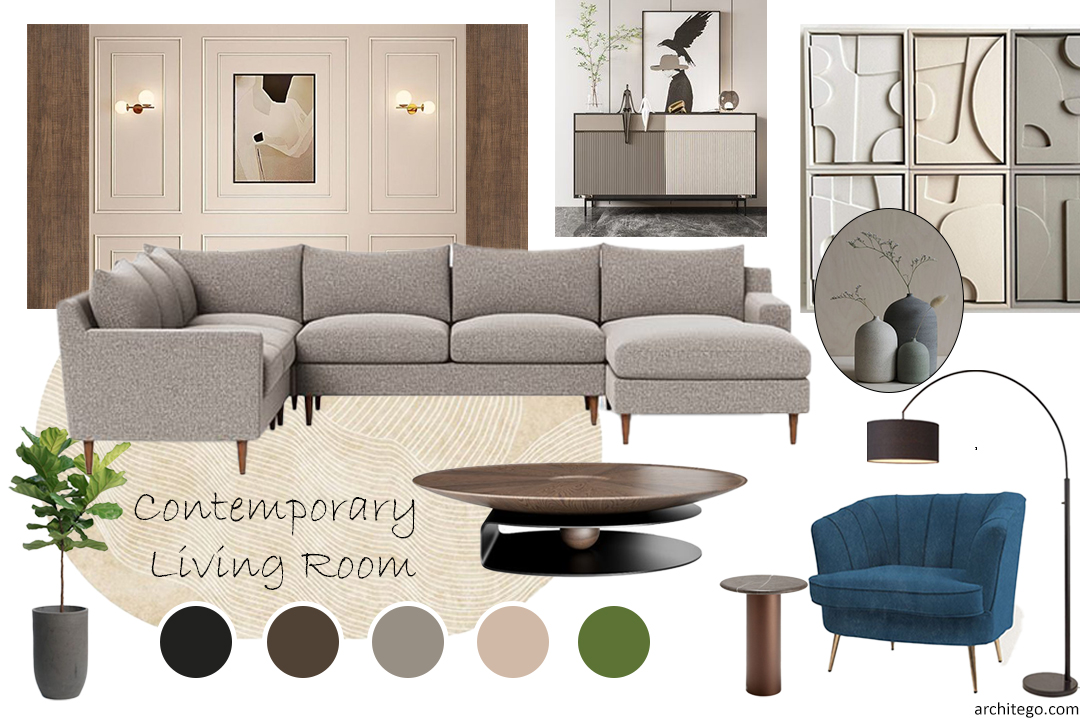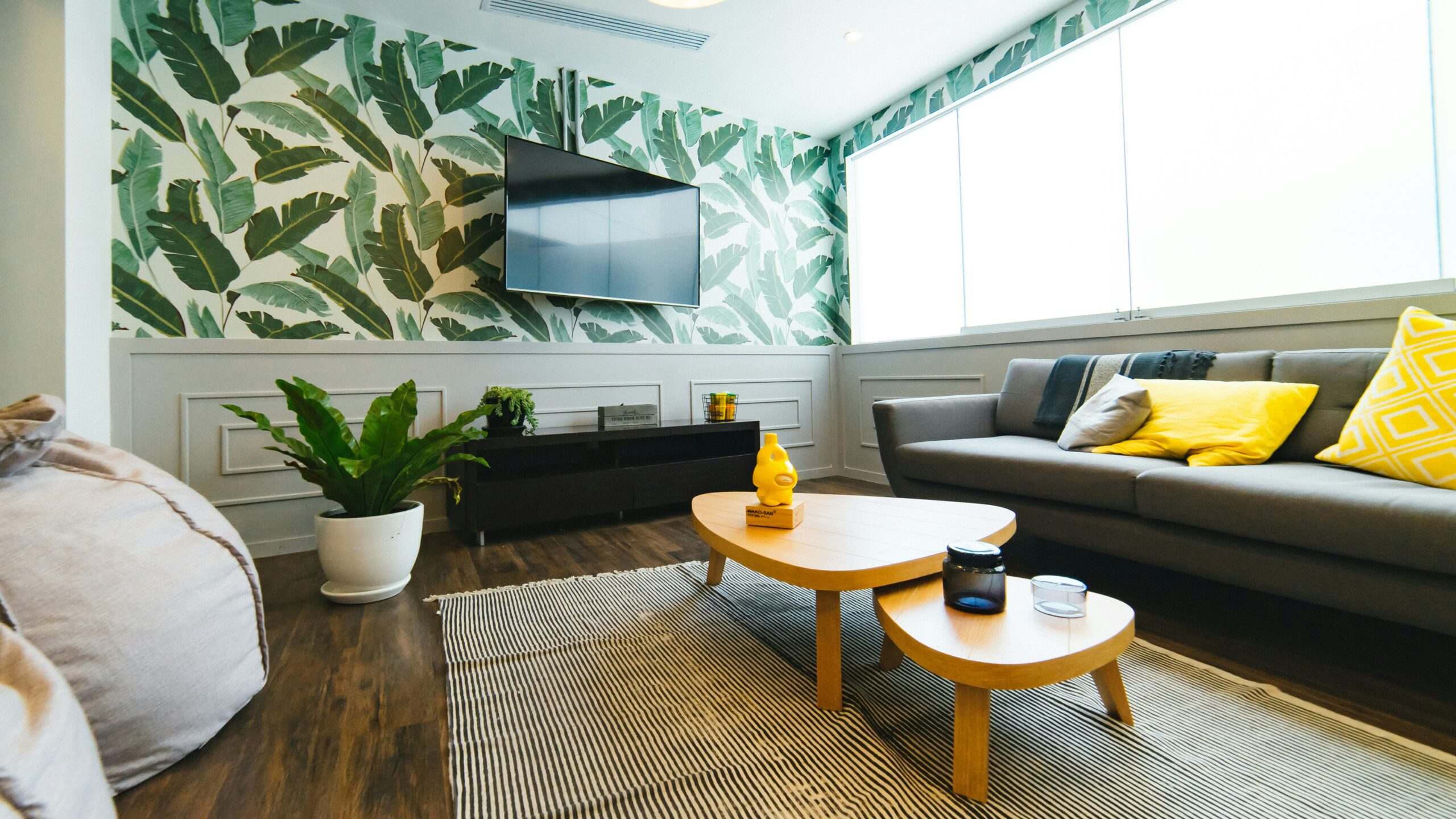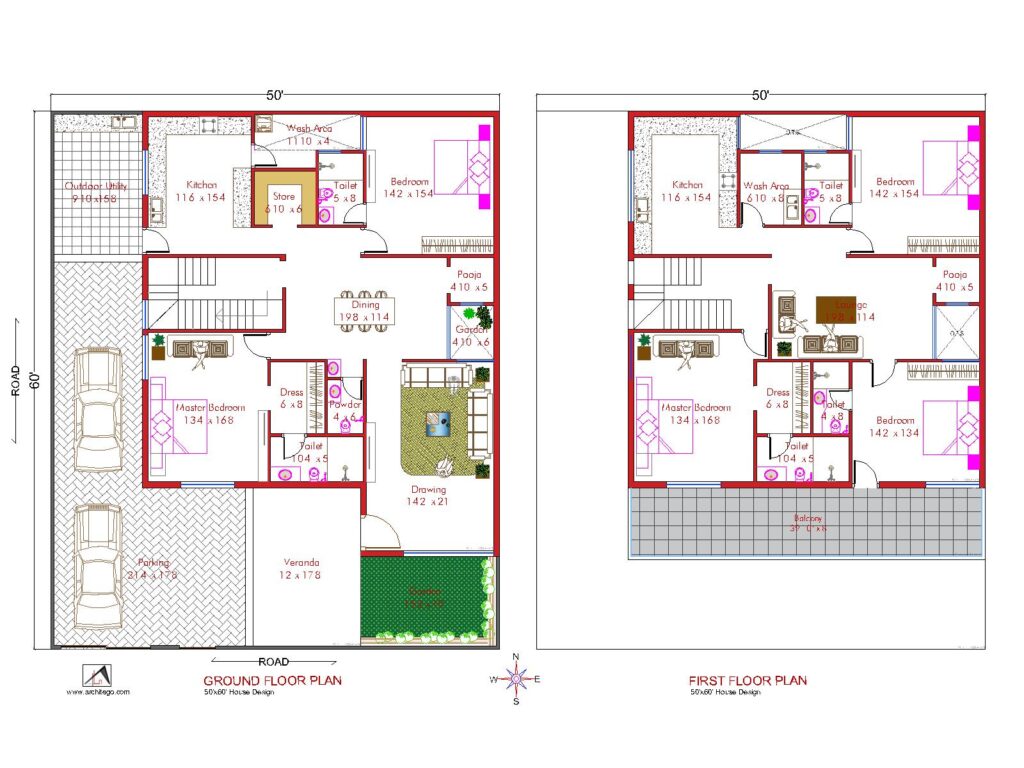Living Room Interior Design in 6 Steps
Welcome to our interior design blog! If you’re planning to transform your living room into a stylish and comfortable haven, you’ve come to the right place. The journey to creating your dream living room starts with a clear vision, and one of the most effective tools to bring that vision to life is a mood board.
A mood board is more than just a collection of beautiful images; it’s a strategic, visual representation of your design concept. It helps you refine your ideas, make cohesive design decisions, and stay focused on your goals. In this blog post, we’ll guide you through the design process of designing living room of your style and theme.

Steps to Create Your Living Room Mood Board
1. Select a theme or style for your living room

Start by identifying the overall style or theme you want for your living room. Are you drawn to the clean lines of modern design, the cozy elements of Scandinavian décor, or the eclectic mix of bohemian style? Some popular themes include:
- Modern Minimalistic: Characterized by clean lines, neutral color palettes, and minimalistic design. It often includes materials like glass, metal, and leather.
- Contemporary: Similar to modern but more fluid and less rigid. It often includes a mix of bold and neutral colors and incorporates current design trends.
- Bohemian (Boho): Known for its eclectic mix of patterns, colors, and textures. It often includes vintage furniture, colorful rugs, and an abundance of plants.
- Scandinavian: Features simplicity, functionality, and minimalism. It includes light colors, natural materials, and a cozy, inviting atmosphere.
- Japandi: It is a hybrid trend that combines the modern simplicity of Scandinavian design with the timeless elegance of Japanese aesthetics.
- Industrial: Inspired by warehouses and factories, this style includes exposed brick, metal, wood, and a neutral color palette. It often features large, open spaces.
- Traditional: This style is classic and timeless, featuring elegant furniture, rich colors, and ornate details. It often includes elements like fireplaces, large mirrors, and luxurious fabrics.
- Coastal: Inspired by the beach and ocean, this style includes light, airy colors like whites and blues, natural textures like wicker and jute, and nautical elements.
2. Pick a Color Palette
Choose a color scheme that sets the tone for your living room. Consider the following options:
- Neutral Tones: Whites, beiges, and grays create a serene and versatile backdrop.
- Bold Colors: Reds, blues, and yellows add vibrancy and energy.
- Earthy Tones: Greens and browns bring warmth and a natural feel.
- Accent Colors: Use subdued accent colors like muted blues, greens, or earthy tones.
- Monochromatic Scheme: Different shades of a single color for a sophisticated look.
3. Identify key pieces of furniture
To create a living room that aligns with your style and color palette, select furniture pieces that complement both the aesthetic and the hues of the space. This may include:
- Sofa
- Coffee table
- Side tables
- Armchairs
- Bookshelves or media units
4. Plan Your Lighting

Lighting is a critical element in interior design, especially in a living room where functionality and ambiance are key. When creating a mood board for your living room, thoughtful lighting choices can set the mood, enhance the room’s features, and create a welcoming atmosphere.
- Ambient Lighting: Provides overall illumination for the room. Includes ceiling fixtures like chandeliers, recessed lights, or pendant lights.
- Task Lighting: Focuses on specific areas for activities like reading. Includes table lamps, floor lamps, and under-cabinet lights.
- Accent Lighting: Highlights particular features or creates visual interest. Includes wall sconces, picture lights, and LED strips.
- Decorative Lighting: Adds style and enhances the room’s aesthetic. Includes statement chandeliers, unique light fixtures, and artistic lamps.
5. Incorporate Textiles
Textiles play a crucial role in enhancing the comfort and aesthetic of your living room. You can add texture and warmth with textiles such as rugs, curtains, throw pillows, and blankets. These elements can significantly impact the overall feel of the space.
6. Add personal touches with accessories and décor
To elevate your living room, accessories and décor should enhance the space while adhering to a clean and uncluttered aesthetic. Think about artwork, plants, decorative objects, and other elements that add character and charm. By thoughtfully selecting these accessories and décor items, you can create a balanced living room that is both functional and aesthetically pleasing.
Visit our website Architego.com
Here is an example mood board: Japandi Style Living Room

Japandi is a hybrid trend that combines the modern simplicity of Scandinavian design with the timeless elegance of Japanese aesthetics. This style emphasizes minimalism, functionality, and natural elements, creating a serene and harmonious living space.
- Color Palette
- Neutral Tones: Soft whites, beiges, light grays, and earthy tones.
- Accents: Muted shades of blue, green, or even black for contrast.
2. Furniture
- Sofa: A low-profile, minimalist sofa in a neutral fabric like linen or cotton. Light gray or beige works well.
- Coffee Table: Choose a simple wooden coffee table, preferably with clean lines and a natural finish.
- Media Console: A sleek wooden media console with sliding doors or open shelving to maintain the minimalist look.
- Accent Chair: Incorporate a chair with a wooden frame and a simple upholstered seat in a neutral color.
- Storage: Built-in shelving or minimalist wooden cabinets to keep the space tidy.
3. Textiles
- Rug: A natural fiber rug, such as jute or sisal, in a light, neutral color.
- Cushions and Throws: Soft, natural fabrics in muted tones and simple patterns. Think linen or cotton cushions with subtle textures.
4. Lighting
- Ambient Lighting: Use floor lamps and table lamps with simple designs and natural materials like wood or paper.
- Accent Lighting: Consider Japanese-style lanterns or Scandinavian-inspired pendant lights.
5. Décor and Accessories
- Plants: Incorporate greenery with potted plants or bonsai trees in simple, ceramic pots.
- Artwork: Choose minimalistic art pieces, such as black and white prints or simple line drawings.
- Decorative Objects: Use ceramics, wooden bowls, and other natural materials. Keep decor minimal and purposeful.
- Mirrors: A large, round mirror with a thin, wooden frame can add a sense of space and light.
FAQ –
1. How do I start creating a living room mood board?
Begin by gathering inspiration from magazines, online platforms like Pinterest, and interior design websites. Collect images of furniture, color swatches, textiles, and decor items that align with your vision. Use digital tools or physical boards to compile these elements.
2. How can a mood board assist in creating a focal point in the living room?
Use the mood board to visualize different focal point options, such as a statement piece of furniture, a feature wall, or a large piece of artwork. Arrange supporting elements around this focal point to see how they draw attention to it.
3. Can a mood board help me stay within budget?
Yes, by visualizing all elements together, you can prioritize essential items and avoid impulse purchases. It helps you make informed decisions about where to splurge and where to save, keeping the overall design cohesive and cost-effective.
Also See –




Pingback:Japandi Style Living Room Mood Board - Architego
Pingback:Designing Contemporary Style Living Room | Mood Board - Architego